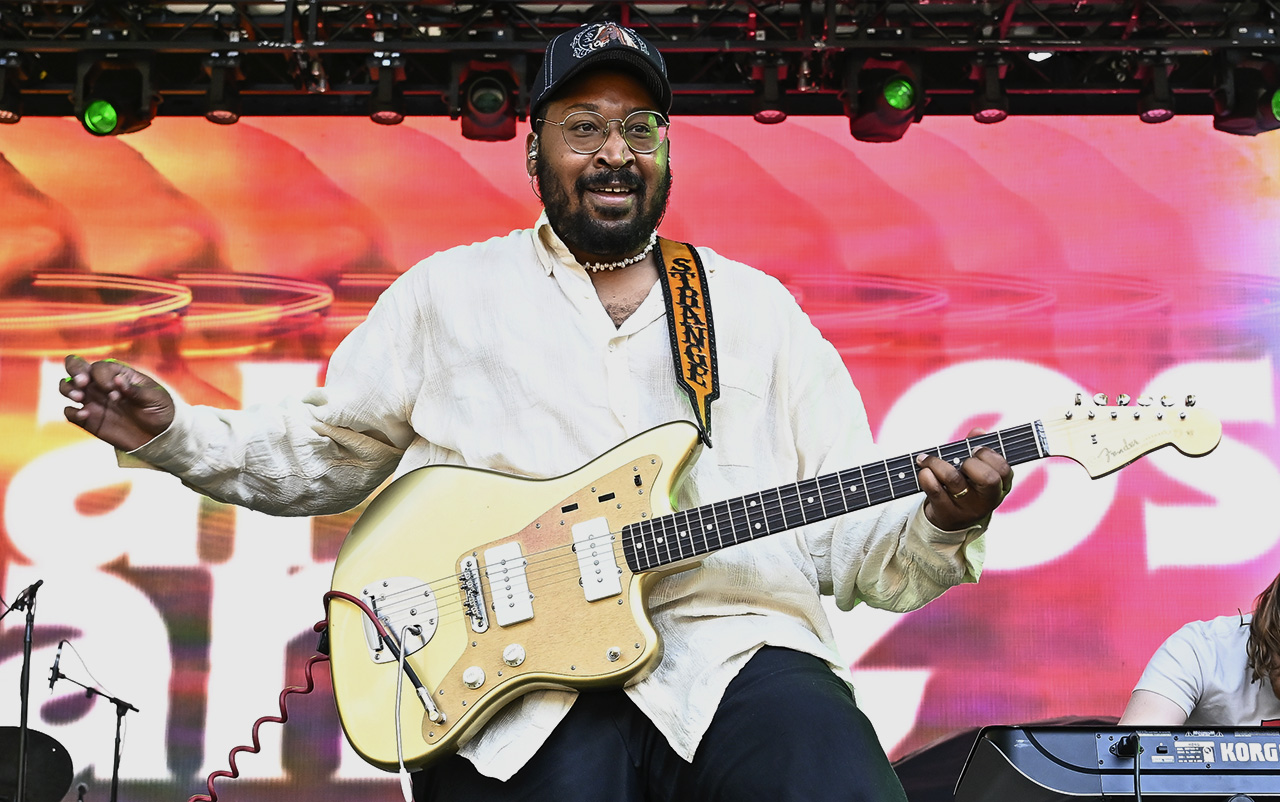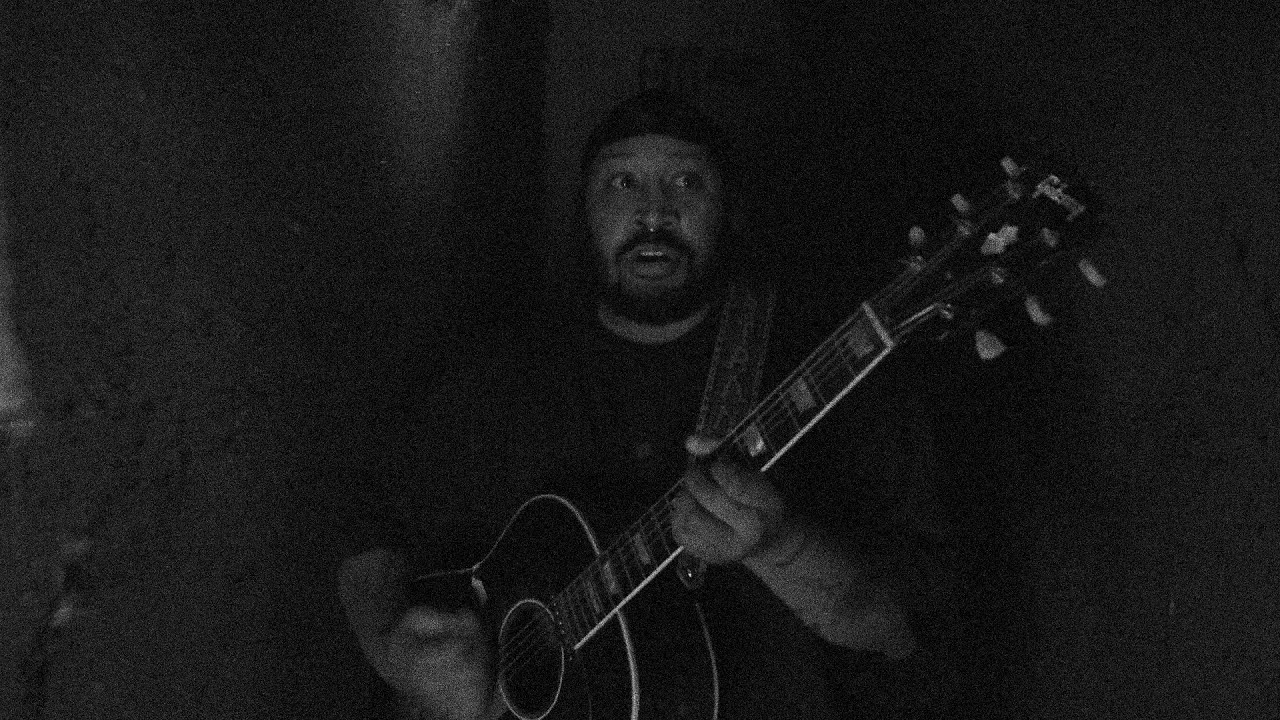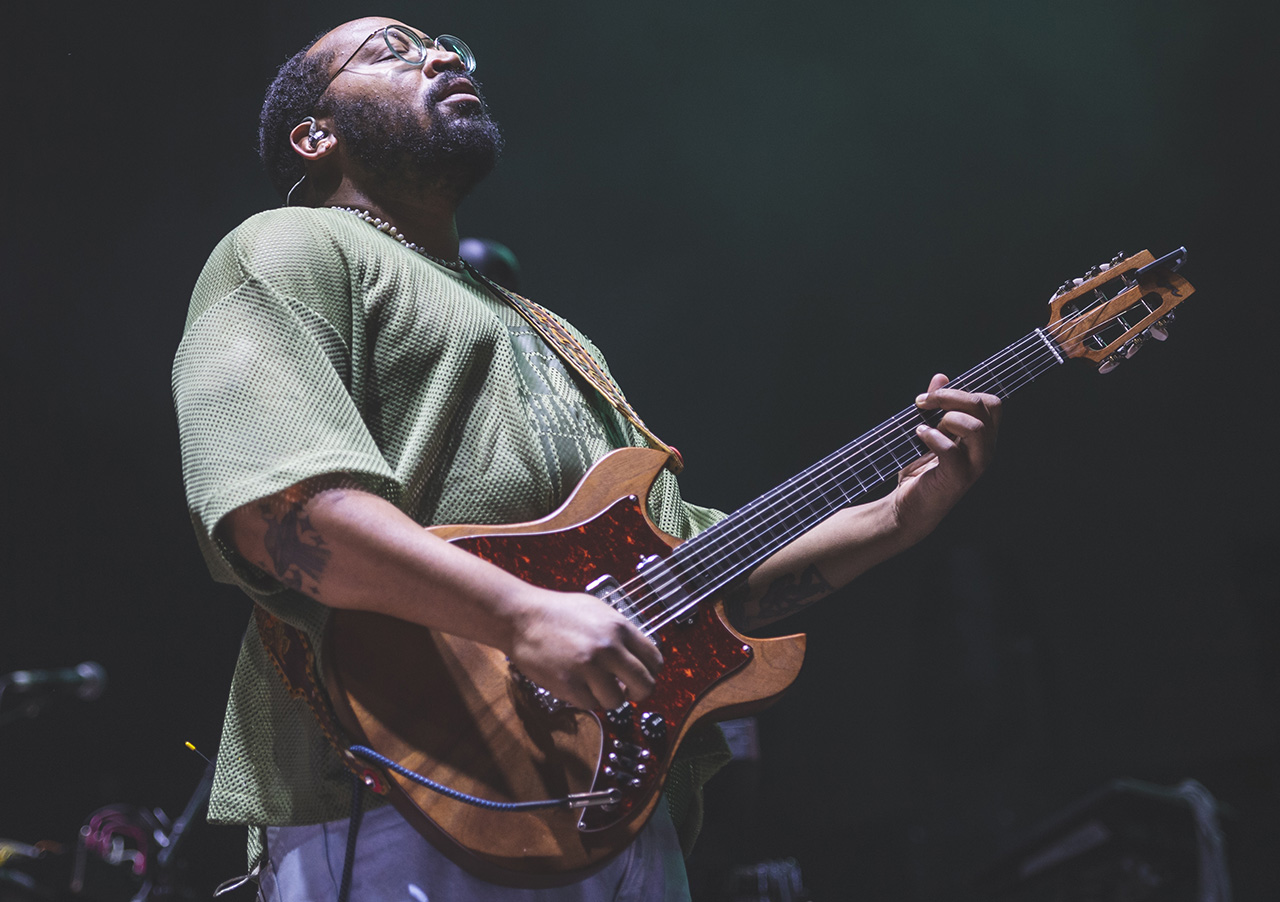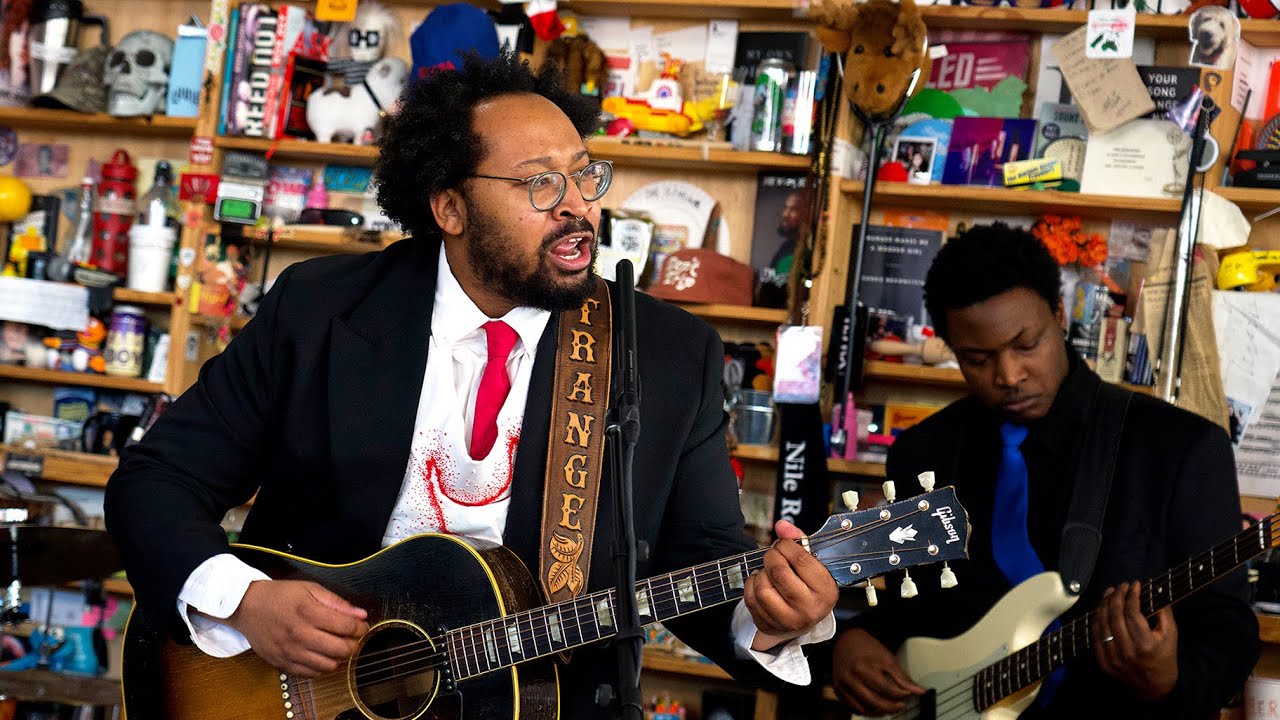Bartees Strange is in the 4AD basement studio where he created his breakthrough second record, Farm To Table. But it’s not exactly home-away-from-home for the anarchic American rocker.
“I have four times as much gear,” he says of the enormous warehouse space where he tracked his latest record, Horror.
Born in Ipswich, England, to a military father and opera singer mother, Strange’s early memories of the UK are rooted in textures rather than time. “I remember the streets were all stony. When we moved to the States, everything was new.”
So were the musical influences. His dad’s record collection opened his ears to the analog sounds of Parliament-Funkadelic, instrumental combo the Bar-Kays, and the ever-evolving Isley Brothers, and that led him deeper into the unknown.
“I grew up on one side of the tracks, curious about the other,” he says. “I heard Led Zeppelin and I was like, ‘This sounds like Eddie Hazel!’ But Hazel was first.” It all helped shape his genre-agnostic approach.
New song Hit It Quit It dishes out a Tame Impala-sized singalong chorus. The single Wants Needs features a math rock moment reminiscent of Foals before busting into Alabama Shakes-style garage cool, with that all-important no-pick right-hand rhythm. “I like how skin sounds on strings,” he says.
But he wasn’t always so confident in his technique, as the producer and former hardcore guitarist explains.

When did you first start playing guitar?
“My mom’s friends were virtuosic piano players, cellists, and singers, so when I thought of musicians, I thought you had to be serious and special. As I got older, I would go to shows and think, ‘None of these people know how to play their instruments – and it sounds great!’
“I started on trumpet, got an F in band, and quit. I tried piano but I could not get it. My friend Christian had a guitar and it just clicked. I would write songs on one string; I thought that was what guitar playing was.
“I went to CBR Guitars in Yukon, Oklahoma, owned by this guy named Dale. He was a sideman for country bands in the 60/70s. It was so different from anything I’d seen. That’s how I fell in love with the blues – rythmic stuff with chicken pickin’ and claw hammer.”
What was your first guitar?
“My mom and dad bought me an Epiphone Les Paul Jr single cutaway when I was 14. Not a cool Les Paul; I sold it. My parents were heartbroken, but I wanted a Stratocaster with a whammy bar so badly after seeing Jimi Hendrix. When I heard Sonic Youth I was like, ‘I need a Jazzmaster, and I’m gonna put duct tape on it!’”
You produced a lot of the early demos for Horror at your home studio in Baltimore. What’s good about working that way?
“When I moved to New York I had bad experiences in studios. No one would listen to me. I’d say, ‘I want to try this,’ but the engineer would say, ‘You don’t know what you’re talking about.’ Often, I was the only black person in the studio. They were like, ‘This is our world, and you’re paying us.’
“So I taught myself on YouTube. I’d get home from work, watch videos about compression, buy the compressor, and learn how to use it. I began to understand that time was the most valuable resource in making records. You can make a whole record with one microphone. You don’t need anything to do something.”

You met producer Jack Antonoff at the All Things Go Festival in 2022 when he approached you at a food stall and declared he was a fan, eventually leading to co-producing Horror with you. Where can we hear Antonoff’s input most vividly?
“In the song Too MuchJack took a rough thing and turned it into something that was fully formed – it became meaner. He’s got no rules. He’ll start treating the master like, ‘The entire song here needs a phaser!’ He’ll apply it for two seconds and take it off.
“I’ve worked with producers and writers where there are egos at play. He’s the most successful producer in the world, and there’s none.”

You went to the Grammys after-party the year Antonoff won. What was that like?
“So surreal. It was at the Chateau Marmont in West Hollywood. I pulled up with my friend Lauren Mayberry from CHVRCHES and walked in. I said, ‘Lauren, this is crazy!’ She was like, ‘Get used to it, pal!’
“But the person I was most in awe of was (The National’s) Matt Berninger’s wife, Carin Besser, who I’ve always admired because of her writing on those records. I was like, ‘You’re like the sixth man. You’re a huge part of that band!’ I talked to her longer than I talked to Matt!”
For your Tiny Desk concert you’re brandishing an archtop, hollow-body Gibson ES-125T in sunburst, also played by Tracy Chapman and B.B King. Why did it appeal to you?
Most of the vintage gear I bought at shops, because for stuff like that you gotta touch it
“My friend Dan had this Guild hollow-body electric, and I liked the idea of an electric acoustic – not an acoustic-electric; I hate how they sound. I didn’t want one that would feed back too easily.
“Plus, the 125 is three-quarters – just one pickup. The wood is so thin and resonant. In that performance I’m playing through a Fender Vibro-Champ and a Tark 144.
It’s a tape machine emulator and the VU meter runs the whole time with a JFET preamp inside. You can check your levels for the entire set. That’s my overdrive sound because it sounds like a driven tape machine.
“I also have MXNHLT Effects’ PORTA424. I like the Neil Young sputtery shit – that’s how I get it when I’m not going to travel with a small amp that could blow. I use a lot of modulation and shitty pedals!”

You seem to be a big Gibson fan. On Sober you opt for a J-160e sunburst acousticwhich you also play on Baltimore with no amp except for the solo. How did you capture that in the studio?
“Do you remember those little cigarette box amps? I plugged it into one of those, DI’d it and put a reverb on it. The guy that makes those used to work in Fender’s Custom Shop. I bought the cigarette boxes in high school. The whole song’s played live except for that part.”
Closer Backseat Banton features your hallowed ‘65 Epiphone Casino, John Lennon’s guitar of choice in the Beatles’ later years.
“It’s the first vintage rad guitar I bought. But now I’ve got a ’59 Jazzmaster and a ’54 Gibson J-160. Most of them I bought at shops, because for stuff like that you gotta touch it. I’ve tried to go on Reverb and get a steal on an old thing, but it never works.”
GIPHY App Key not set. Please check settings